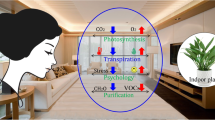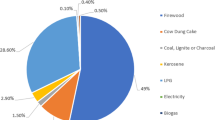Abstract
This study aimed to assess measurements of temperature and relative humidity obtained with HOBO a data logger, under various conditions of exposure to solar radiation, comparing them with those obtained through the use of a temperature/relative humidity probe and a copper-constantan thermocouple psychrometer, which are considered the standards for obtaining such measurements. Data were collected over a 6-day period (from 25 March to 1 April, 2010), during which the equipment was monitored continuously and simultaneously. We employed the following combinations of equipment and conditions: a HOBO data logger in full sunlight; a HOBO data logger shielded within a white plastic cup with windows for air circulation; a HOBO data logger shielded within a gill-type shelter (multi-plate prototype plastic); a copper-constantan thermocouple psychrometer exposed to natural ventilation and protected from sunlight; and a temperature/relative humidity probe under a commercial, multi-plate radiation shield. Comparisons between the measurements obtained with the various devices were made on the basis of statistical indicators: linear regression, with coefficient of determination; index of agreement; maximum absolute error; and mean absolute error. The prototype multi-plate shelter (gill-type) used in order to protect the HOBO data logger was found to provide the best protection against the effects of solar radiation on measurements of temperature and relative humidity. The precision and accuracy of a device that measures temperature and relative humidity depend on an efficient shelter that minimizes the interference caused by solar radiation, thereby avoiding erroneous analysis of the data obtained.







Similar content being viewed by others
References
Azevedo, T. R. (2001). Derivation anthropogenic climate in the metropolitan region of São Paulo addressed as a function of the weekly rhythm of human activities. Thesis in Physical Geography, Faculdade de Filosofia, Letras e Ciências Humanas, Universidade de São Paulo, São Paulo, Brazil. 474 pp.
Brandsma, T., & Van Der Meulen, J.P. (2008). Thermometer screen intercomparison in De Bilt (the Netherlands) – Part II: Description and modeling of mean temperature differences and extremes. International Journal of Climatology, 28, 389–400.
Camerini, N. L., Mendes, L. B., Mota, J. K. M., Nascimento, J. W. B., & Furtado, D. A. (2011). Evaluation of alternative agrometeorological instruments for monitoring poultry shed environment. Engenharia na Agricultura, 19, 125–131.
Campbell, G. S. (1990). Tanner symposium on biophysical measurements and instrumentation. Theoretical and Applied Climatology, 42, 201–202.
CSI Campbell Scientific Inc. (1990) Model HMP45C temperature and relative humidity probe: instruction manual. Revision: 04/99. Logan, Utah: Copyright©, 1990–1999.
Cunha, A. R., & Martins, D. (2004). Comparative study among meteorological elements obtained in conventional and automated meteorological stations in Botucatu, SP, Brazil. Revista Brasileria de Agrometeorologia, 12, 103–111.
Cunha, A. R., Escobedo, J. F., & Galvani, E. (2001). Evaluation of a thermocouple psychrometer of low cost. Revista Brasileria de Agrometeorologia, 9, 17–22.
Danni-Oliveira, I. M. (2002). Thermometer inspection conducts to the empirical studies in geographical climatology. RA’E GA, 6, 75–80.
Dunham, J., Chandler, G., Rieman, B., & Martin, D. (2005). Measuring stream temperature with digital data loggers: a user’s guide. USDA Forest Service Gen. Tech. Rep. RMRS-GTR-150WWW. 15pp.
Fritschen, L. J., & Gay, L. W. (1979). Environmental instrumentation. New York: Springer. 212pp.
Hien, W. N., Yok, T. P., & Yu, C. (2007). Study of thermal performance of extensive rooftop greenery systems in the tropical climate. Building and Environment, 42, 25–54.
HOBO. (2002). BoxCar Pro 4.3 User’s Guide. USA: Copyright© On Set Computer Corporation, 76pp.
Hubbard, K. G., Lin, X., & Walter-Shea, E. A. (2001). The effectiveness of the ASOS, MMTS, Gill, and CRS air temperature radiation shields. Journal of Atmospheric and Oceanic Technology, 18, 851–864.
Huwald, H., Higgins, C. W., Boldi, M. O., Bou-Zeid, E., Lehning, M., & Parlange, M. B. (2009). Albedo effect on radiative errors in air temperature measurements. Water Resources Research, 45, 1–13.
Lin, X., Hubbard, K. G., & Meyer, G. E. (2001). Airflow characteristics of commonly used temperature radiation shelters. Journal of Atmospheric and Oceanic Technology, 18, 329–339.
Lin, X., Hubbard, K. G., & Meyer, G. E. (2004). Sensor and electronic biases/errors in air temperature measurements in common weather networks. Journal of Atmospheric and Oceanic Technology, 21, 1025–1032.
Loheide, S. P., & Gorelick, S. M. (2006). Quantifying stream-aquifer interactions through the analysis of remotely sensed thermographic profiles and in situ temperature histories. Environmental Science and Technology, 40, 3336–3341.
Marin, F. R., Angelocci, L. R., Coelho Filho, M. A., & Villa Nova, N. A. (2001). Construction and evaluation of an aspirated thermocouple psychrometer. Scientia Agricola, 58, 839–844.
Mauder, M., Desjardins, R. L., Gao, Z., & Van Haarlem, R. (2008). Errors of naturally ventilated air temperature measurements in a spatial observation network. Journal of Atmospheric and Oceanic Technology, 25, 2145–2151.
Mendes, M. M. T. (2008). 10 Anos de estações automáticas: perspectivas para a caracterização do clima em Portugal. Licenciado em Ciências Geofísicas - Dissertação de Mestrado em Ciências Geofísicas - Mestrado em Ciências Geofísicas (Especialização em Meteorologia). Faculdade de Ciências – Universidade de Lisboa. 91pp. http://repositorio.ul.pt/bitstream/10451/1315/1/19581_ulfc091372_tm_ TeseMestradoMM.pdf
Nakamura, R., & Mahrt, L. (2005). Air temperature measurement errors in naturally ventilated radiation shelters. Journal of Atmospheric and Oceanic Technology, 22, 1046–1058.
Oliveira, M. J. (2007). Avaliação experimental de interferências causadas pela radiação solar global e pela velocidade dos ventos em medições climatológicas da temperatura do ar. 127 pp. Monografia. Escola de Engenharia de São Carlos, Universidade de São Paulo, São Carlos. http://www.tcc.sc.usp.br/tce/disponíveis/18/180300/tce-12072010-111433/publico/Oliveira_Marcos_Jose_de.pdf
Palmieiri, A. M. (2009). Desenvolvimento de sistema automatizado de baixo custo para coleta e armazenamento de dados e variáveis climáticas: aplicações no ambiente agrícola. 100p. Dissertação (Mestrado em Física do Ambiente Agrícola) - Escola Superior de Agricultura “Luiz de Queiroz”, Universidade de São Paulo, Piracicaba. http://www.teses.usp.br/teses/disponiveis/11/11131/tde-18022010-142019/pt-br.php
Santana, M. A. A., Guimarães, P. LO, Thomaz, J. C. Jr, & Arlino, P. R. A. (2008). Rastreabilidade metrológica e os critérios de aceitação para a equipamentação. METEOROLÓGICA/AMBIENTAL: ENQUALAB-2008 - Congresso da Qualidade em Metrologia Rede Metrológica do Estado de São Paulo – REMESP, São Paulo, Brasil. 6pp.
Soylu, M. K., & Çömlekçioğlu, N. (2009). The effects of high temperature on pollen grain characteristics in tomato (Lycopersicon esculentum M.). Journal of Agriculture Faculty HR U, 13, 35–42.
Spetalen, A., Lofseik, C., Nordli, P. (2000). A comparison of air temperature radiation screens by fields experiments and Computational Fluid Dynamics (CFD) simulations. In: WMO Technical Conference on Meteorological Instruments and Methods of Observation, Beijing, China, 23–27. Instruments and Observing Methods N.74, WMO, Geneva, 54–57.
Sun, B., & Baker, C. B. (2004). A comparative study of ASOS and CRN temperature measurements. In: Eighth Symposium on Integrated Observing and Assimilation Systems for Atmosphere, Oceans and Land Surface. 84th AMS Annual Meeting, Seattle.
Van Der Meulen, J. P., & Brandsma, T. (2008). Thermometer screen intercomparison in De Bilt (The Netherlands), Part I: understanding the weather-dependent temperature differences). International Journal of Climatology, 28, 371–387.
White, G. M., & Ross, I. R. (1991). Humidity. In Z. A. Henry, G. A. Zoerb, & G. S. Birth (Eds.), Instrumentation and measurement for environmental sciences (pp. 8.01–8.13). Saint Joseph: ASAE.
Whiteman, C. D., Hubbe, J. M., & Shaw, W. J. (2000). Evaluation of an inexpensive temperature datalogger for meteorological applications. Journal of Atmospheric and Oceanic Technology, 17, 77–81.
Willmott, C. J., Ackleson, S. G., Davis, R. E., Feddema, J. J., Klink, K. M., Legates, D. R., O’donnell, J., & Rowe, C. M. (1985). Statistics for the evaluation and comparison of models. Journal of Geophysical Research, 90, 8995–9005.
WMO. (2008). World Meteorological Organization. Guide to meteorological instruments and methods of observation, seventh edition, 2008. WMO n.8. http://www.wmo.int/pages/prog/www/IMOP/publications/ CIMO_Guide/CIMO%20Guide%207th%20Edition,%202008/CIMO_Guide-7th_Edition-2008.pdf
Wong, N. H., Tan, P. Y., & Chen, Y. (2007). Study of thermal performance of extensive rooftop greenery systems in the tropical climate. Building and Environment, 42, 25–54.
Author information
Authors and Affiliations
Corresponding author
Rights and permissions
About this article
Cite this article
da Cunha, A.R. Evaluation of measurement errors of temperature and relative humidity from HOBO data logger under different conditions of exposure to solar radiation. Environ Monit Assess 187, 236 (2015). https://doi.org/10.1007/s10661-015-4458-x
Received:
Accepted:
Published:
DOI: https://doi.org/10.1007/s10661-015-4458-x




